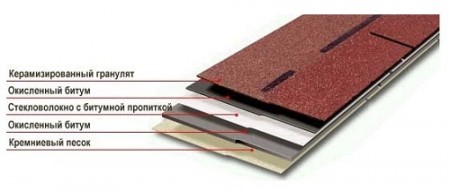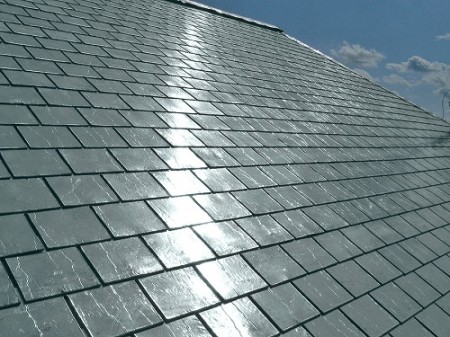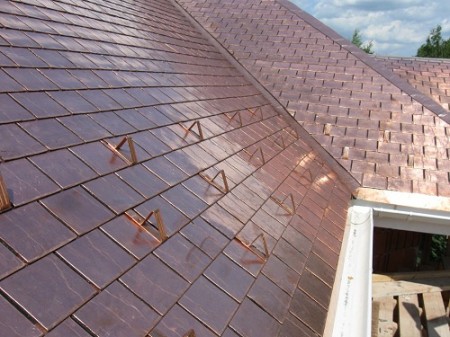Soft tiles are the most popular type of roofing material. Other names: flexible shingles, shingles shingles, roofing tiles, etc. This excellent practical material has been used in the United States for almost half a century in Europe for more than half a century, and only about 15 years ago it appeared in Russia. If we talk about the United States, then there is a large part of the roofs covered with soft tiles. In Russia, this material is only gaining popularity.
Content
Flexible Shingles
It looks like a flat sheet, which has a figured cut from one edge, imitating a few shingles. Soft tiles have no, even the most distant relation to the real, ceramic. There is only an external similarity, which is achieved due to the relief of the leaf. At the heart of this material is fiberglass, impregnated with rubber bitumen and sprinkled with a special mineral crumb. Thus, soft tile is a completely artificial material on which fungi and mold can not reproduce. Thanks to the rubber bitumen, the product is completely unaffected by moisture, the mineral crumb protects well from damage, ultraviolet and prevents the ignition of the material.
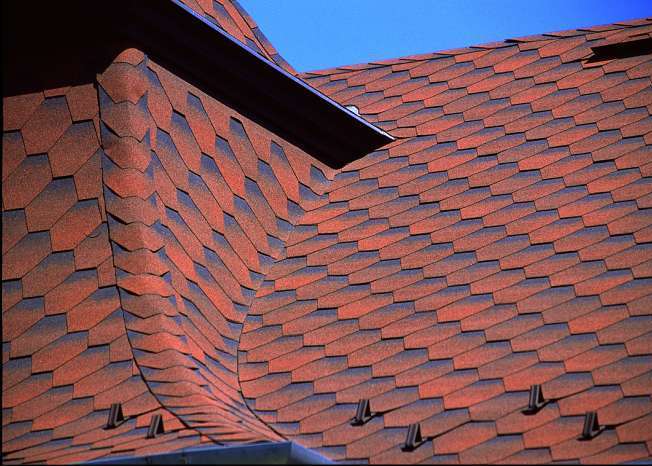
Manufacturers produce tiles of various shapes: wavy, rectangular, hexagonal, etc. Thus, soft tiles are suitable for roofing of any complexity, it is used as for finishing new roofs, and for the restoration of old roofs. In this case, the tile sheets are laid directly on the old covering, which is prepared in a certain way.
The basis for laying soft shingles should be clean, dry, smooth and smooth. Usually it is made of OSB, oriented chipboard, and also from moisture resistant plywood.
Soft tiles, advantages
- The finished roof is a continuous layer of waterproofing, as under the sun's rays the bitumen is heated, and the tiles are glued together, forming a two-layer waterproofing sheet.
- Excellent noise suppression, including rain and hail.
- The material is fairly simple to install, does not require the use of special tools.
- Do not need additional accessories for the device of the valley and skates.
- A wide range of colors.
- Soft roofing is quite an economical material, while working with it there is very little waste.
- Does not rot, does not lend itself to corrosion.
- On the surface of the soft roof, lichen, fungus, moss and mold can not breed.
- The roofing material does not conduct electricity.
- Resistant to high temperatures and strong wind gusts.
- Being a soft material, it is easily adjusted to any errors in the construction of the roof.
- Has a low weight, there is no need to strengthen the roof, foundation and walls of the building.
- Very convenient in transportation and storage.
Types of flexible shingles
Today you can buy bitumen tiles with several types of coating:
- Bituminous tiles with zinc-titanium coating
This type of shingles is made on the basis of bitumen and has an external coating of titanium and zinc. It is soft, flexible and very durable material.
- Tiles with copper coating
Very beautiful material with a metallized coating. Of the merits, we can note the reflectivity of the coating, which significantly reduces the thermal effect on the bitumen layer.
- And, finally, the classic version, which, in fact, is in this article is bitumen shingles, the prices for which are not as high as the previous two, and according to the characteristics, it is practically in no way inferior to them.
Installation of shingles. How to lay shingles
As already noted above, due to the softness of the material, bitumen tiles can be used to trim the most complex roof.
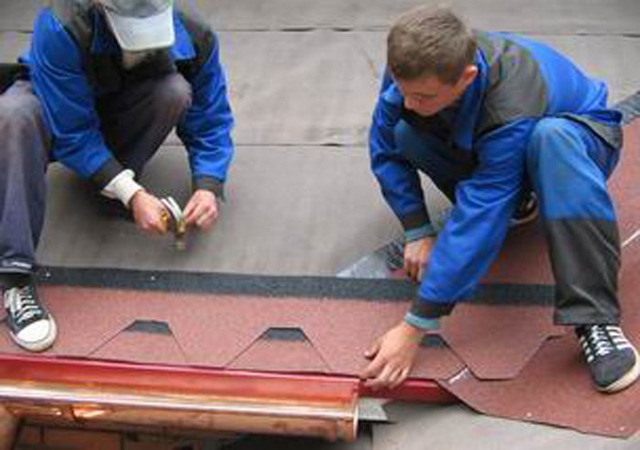
The shape of the leaf petals is different, which somewhat changes the technology of work. We will consider the option of laying trapezoidal tiles, which, when laid, looks like a regular hexagon.
To do this, you need:
- Roof tiles.
- Material for lining.
- Glue.
- Profiles for pediments and cornices.
- Material for the crate.
- Nails roofing and carpentry.
- Other construction tools.
For high-quality laying of bituminous shingles, it is necessary to have a smooth and continuous crate. Differences and gaps are unacceptable. The preferred materials for the installation of the battens are plywood or OSB. However, regular boards are often used, most importantly, to make the surface smooth. If the distance between the rafters is 6 cm, then the thickness of the plywood for the crate should be at least 1.2 cm, boards - 2 cm. When the distance between the rafters is larger, the crate, respectively, should be thicker.
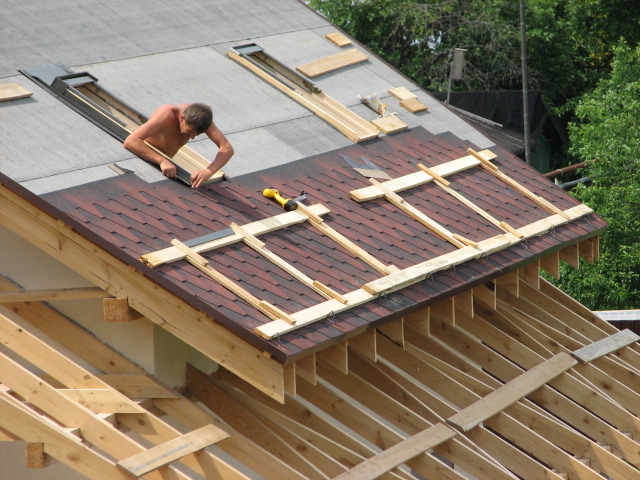
After the crate is ready, it is necessary to enclose all protruding structures (for example, pipes) from all sides with a triangular shaped bar. This is necessary in order for the transition from the horizontal to the vertical surface to be smoother, and the nail could be hammered into the bar to secure the sheet. Bituminous shingles should lie on the lining material. For this purpose, the ruberoid is most often used. However, if the roof slopes have a slope of less than 18 degrees, it is necessary to lay a roofing felt on the entire surface of the crate, if more, you can limit the strip around the perimeter.
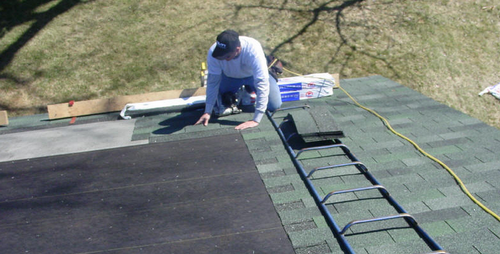
The ruberoid must be laid horizontally, making an overlap of approximately 10 cm. In places of overlap, the strips are glued together with bituminous resin, and the edges are nailed with roofing nails to the crate. On the edges of the eaves nailed metal profiles to protect against moisture.

Profile nailed roofing nails. On the edge of the roof is installed curtain tiles, and on the valley special grass carpet. They are strips of flexible material for the purpose of additional protection of these sections of the roof. Before you start laying with them, you need to remove the protective film. The endovy carpet is fixed with glue and additionally nailed by roofing nails.

Flexible tiles are laid from the very bottom of the roof slope from the center. First, the film is removed from the bottom of the sheet. The sheet is placed in such a way that its lower part does not reach the edge of the previously laid cornice roof tile 10 mm, and the petals overlap its joint. Each sheet should be nailed with at least four nails so that they are below the edge of the groove. If the nails are driven in correctly, their hats will be covered with a top sheet. The edge of the protrusions of the upper row must coincide with the edge of the bottoms of the lower row.

When stacking on the pediments along the edge, the sheets are cut and glued to the pediment profile. At the endow roof tile should be cut in such a way that the carpet remains open about 15 cm. As for the ridge, it is trimmed with ridge tiles according to the instructions that are attached when purchasing the material.
A guide to installing soft tiles can be found here.



